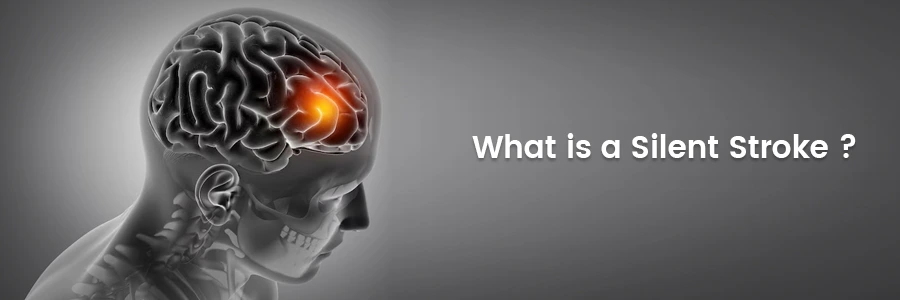
Understanding What a Silent Stroke Is
A stroke happens when the brain stops receiving blood and can cause permanent damage and disability. Silent stroke is difficult to detect because it affects a part of the brain that does not regulate functions, such as speaking or moving. These strokes occur when the blood flow to the part of the brain is suddenly cut off, depriving that portion of the brain of oxygen and causing damage to brain cells.
What are the silent stroke symptoms?
The patient may also experience additional symptoms which are mistaken for signs of aging. They include:
- Loss of memory (dementia)
- Problems in balancing
- Sudden changes in personality and mood
- Reduced memory
- Falling frequently
- Urine leakage
- Alteration in mood
- Reduced thinking ability
What causes a stroke?
For the brain to work correctly, blood must be oxygen-rich and flow freely. The signs of a stroke might differ depending on the part of the damaged brain. Before an actual stroke, a transient ischemic attack (TIA) or mini-stroke can also happen. People who have previously had a mini-stroke are far more likely to encounter a major one in the future. Mini-stroke symptoms might go away fast.
How dangerous are silent strokes?
Even though quiet strokes appear to be harmless, they can yet cause long-lasting harm. After multiple silent strokes, a person may have trouble remembering things and even struggle to concentrate. Silent strokes can result in emotional problems such as inappropriate crying or laughing, they can make a person feel disoriented in a normal place.
Secure your health with a second opinion. Make informed decisions and book your appointment today!
Get A Second OpinionManaging a silent stroke: Prevention tips that you must follow
While it is difficult to detect a silent stroke and even more challenging to fix the parts that have already been damaged, you can only prevent it. There are several ways to prevent the condition. Some of them are:
Exercise
Exercising for 30 minutes daily reduces the chance of a silent stroke by 40%. Healthy people are less prone to develop it. Additionally, they are better equipped to recover in case of a situation.
Weight management
The risk of a silent stroke is increased by obesity and excess weight. Patients who are obese are more prone to artery-blocking plaque. Healthy body weight is defined as 18.5 to 24.9 on the BMI index.
Manage underlying medical conditions and strict Blood Pressure control
Underlying medical issues such as high cholesterol, diabetes, and high blood pressure should be managed by patients. The risk of a silent stroke rises when these conditions continue.
Healthy lifestyle
The risk of a silent stroke is also decreased by living a healthy and active lifestyle. Both drinking alcohol and smoking must be avoided. Cut down your salt intake.
It is challenging and usually incomplete to repair injured brain tissue. Most of the time, the healthy parts of the brain replace the destroyed part's functions. However, the capacity of the brain to replace damaged tissues decreases in cases of silent stroke that progress silently over time.
Silent strokes can cause permanent brain damage; Therefore, medical professionals should treat the symptoms as soon as possible. Sudden changes in memory and cognitive function should not be avoided and should consult a doctor immediately.
